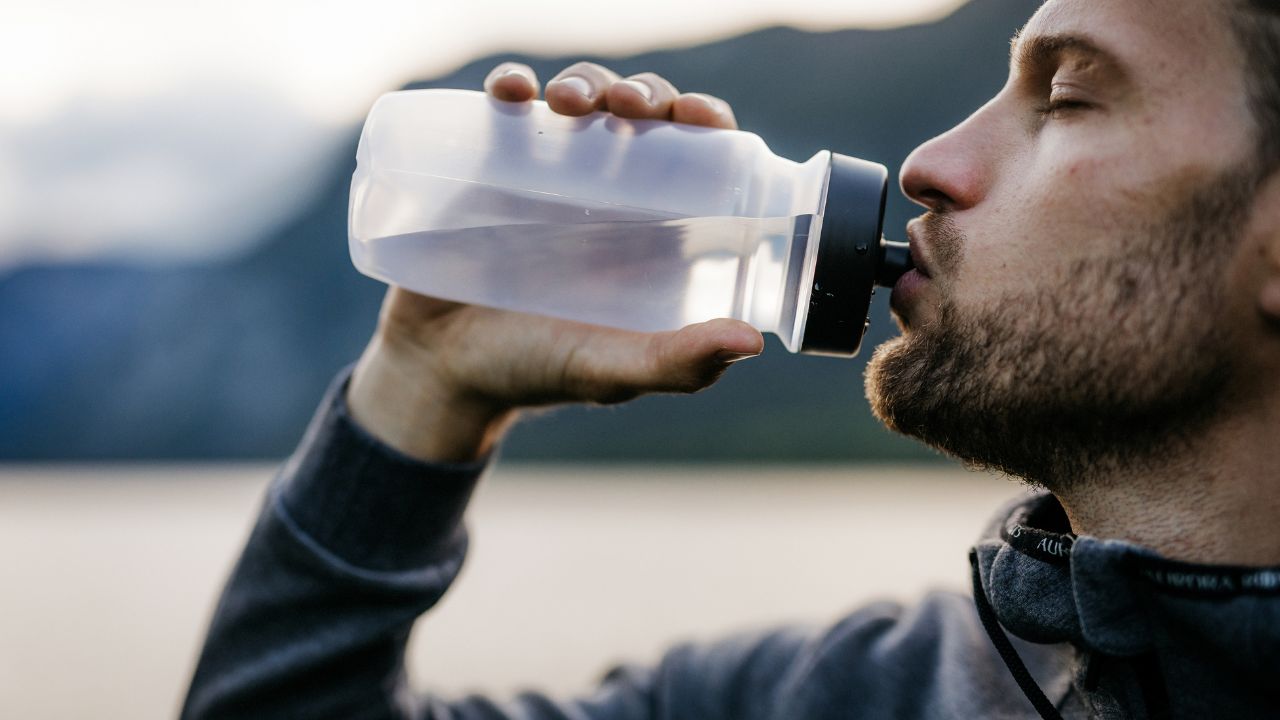Water is often taken for granted. It is readily available for most people, yet its role in maintaining health is so fundamental that even mild dehydration can disrupt how our body functions. We hear constant advice to “drink eight glasses a day,” but is this just a myth or a science-backed guideline?
Hydration goes far beyond quenching thirst. Every cell, tissue, and organ in the body relies on water to operate efficiently. It regulates temperature, transports nutrients, flushes out waste, cushions joints, and even influences how we think and feel. In fact, losing just 1–2% of body water can impair concentration, mood, and physical performance.
Despite its importance, many people underestimate their fluid needs. Busy routines, reliance on caffeinated drinks, or simply ignoring thirst can gradually lead to dehydration. We are explaining the science of hydration, why water is vital, how much you really need, signs of dehydration, and practical tips for staying hydrated throughout the day.
Why Water is Essential for the Body
Supports Vital Functions
Water is the foundation of life. Around 60% of the human body is composed of water, and it plays a role in nearly every biological process.
- Nutrient transport: Water carries vitamins, minerals, and glucose to cells.
- Waste removal: Kidneys use water to filter toxins and flush them out as urine.
- Temperature regulation: Sweating cools the body, preventing overheating.
- Lubrication: Water keeps joints and tissues smooth, preventing friction.
- Shock absorption: The brain and spinal cord are cushioned by cerebrospinal fluid, largely composed of water.
Impact on Energy and Mood
Even slight dehydration can leave you feeling fatigued, irritable, or less alert. Research shows that people who drink adequate water perform better in memory and attention tests. Dehydration, on the other hand, can mimic symptoms of anxiety or low mood.
How Much Water Do You Really Need?
The traditional “8 glasses a day” rule is a rough guideline, but hydration needs vary based on age, activity level, climate, and overall health.
General Recommendations
- Men: About 3.7 litres (including fluids from food and beverages).
- Women: About 2.7 litres.
(Source: U.S. National Academies of Sciences, Engineering, and Medicine)
However, 20–30% of our daily water intake comes from food, fruits, vegetables, soups, and yoghurt, so not all hydration has to come from drinks.
Factors That Influence Water Needs
- Physical activity: Exercise increases fluid loss through sweat. Extra 400–700 ml may be needed per 30 minutes of activity.
- Climate: Hot, humid weather or high altitudes increase fluid requirements.
- Diet: High salt, caffeine, or protein intake demands more water for metabolism and excretion.
- Health conditions: Fever, diarrhoea, vomiting, and certain medications (like diuretics) raise water needs.
Individual Signs of Adequate Hydration
Instead of fixating on numbers, pay attention to your body:
- Pale yellow urine is a reliable sign of good hydration.
- Rare urination or very dark urine indicates dehydration.
- Persistent thirst means you need more fluids.
Signs and Symptoms of Dehydration
Dehydration occurs when the body loses more fluids than it takes in.
Mild to Moderate Dehydration
- Thirst
- Dry mouth and lips
- Headaches
- Fatigue
- Reduced concentration
- Dizziness or light-headedness
Severe Dehydration (requires medical attention)
- Very dark urine or no urination for 8+ hours
- Rapid heartbeat
- Sunken eyes
- Extreme confusion or irritability
- Low blood pressure and fainting
Left untreated, severe dehydration can become life-threatening, particularly in children and older adults.
The Role of Electrolytes in Hydration
Water alone is not enough in some situations. Electrolytes, sodium, potassium, magnesium, and chloride, are minerals that regulate fluid balance, muscle contractions, and nerve function.
During heavy sweating, not only water but also electrolytes are lost. This is why athletes or workers in hot environments often require sports drinks or electrolyte supplements. However, for most people with moderate activity, water is sufficient for daily hydration.
Hydrating Foods: More Than Just Drinks
Hydration isn’t limited to drinking water. Many foods naturally contain high water content:
- Cucumbers (96% water)
- Watermelon (92%)
- Strawberries (91%)
- Oranges (86%)
- Tomatoes (94%)
- Lettuce (96%)
- Soups and broths
Including these foods in daily meals contributes significantly to hydration while also providing fibre, vitamins, and antioxidants.
Myths and Misconceptions About Hydration
- “Only plain water counts.”
False—tea, coffee, milk, and even foods contribute to hydration. Excess caffeine may have a mild diuretic effect, but moderate tea and coffee still count toward fluid intake. - “You should drink before feeling thirsty.”
Generally true, especially for athletes or older adults whose thirst mechanism may be less effective. However, thirst is a useful reminder for most healthy adults. - “More water is always better.”
Not true. Excessive water intake without electrolytes can lead to hyponatraemia (dangerously low sodium levels), causing nausea, seizures, and in rare cases, death. - “Cold water burns more calories.”
The effect is negligible. The body uses some energy to warm water to body temperature, but it won’t cause meaningful weight loss.
Practical Tips to Stay Hydrated
- Start your day with water. A glass first thing in the morning helps replenish fluids lost overnight.
- Carry a reusable bottle. Having water within reach makes it easier to sip throughout the day.
- Set reminders. Apps or phone alarms can prompt you to drink if you often forget.
- Flavour naturally. Infuse water with lemon, cucumber, or mint for taste without added sugar.
- Drink before meals. This aids digestion and prevents mistaking thirst for hunger.
- Match intake to activity. Take extra sips before, during, and after exercise.
- Monitor urine colour. Aim for light yellow as an indicator of hydration.
Special Considerations
Children
Children are more prone to dehydration, particularly in hot weather or during physical activity. Encourage water breaks during play and avoid excessive sugary drinks.
Older Adults
With age, the sensation of thirst diminishes. Seniors should consciously drink fluids, even if they don’t feel thirsty, to avoid dehydration-related confusion or dizziness.
Pregnant and Breastfeeding Women
Fluid needs are higher—pregnant women require an extra 300 ml per day, and breastfeeding mothers need around 700 ml extra to support milk production.
Athletes
Hydration strategies vary with sport intensity and climate. Endurance athletes may need sports drinks with electrolytes to maintain balance during prolonged sweating.
Frequently Asked Questions
Q: Can tea and coffee dehydrate me?
Not significantly. In moderation, they contribute to hydration despite mild diuretic effects.
Q: Should I drink alkaline or “detox” water?
There is little scientific evidence that alkaline water provides special benefits beyond regular clean water.
Q: How do I know if I’m drinking too much water?
Frequent, clear urination (every 30–60 minutes) or nausea may indicate overhydration. Adjust intake accordingly.
Q: Do energy drinks hydrate better than water?
Not necessarily. They often contain caffeine and sugar, which can be counterproductive. Plain water or electrolyte-rich drinks are better.
Hydration is far more than a wellness trend, it is a cornerstone of health. Water enables every organ to function, fuels the brain, cushions joints, and regulates temperature. While the “8 glasses a day” rule provides a simple starting point, true hydration depends on individual needs, lifestyle, and environment.
The key is listening to your body. Thirst, urine colour, and energy levels are reliable indicators. Combining water with hydrating foods, limiting excessive caffeine and alcohol, and making conscious choices throughout the day will ensure your body stays balanced.
Ultimately, drinking enough water is one of the simplest, cheapest, and most effective steps anyone can take towards better health. It doesn’t require expensive supplements or fancy products, just awareness, consistency, and a little mindfulness.








Leave a Comment